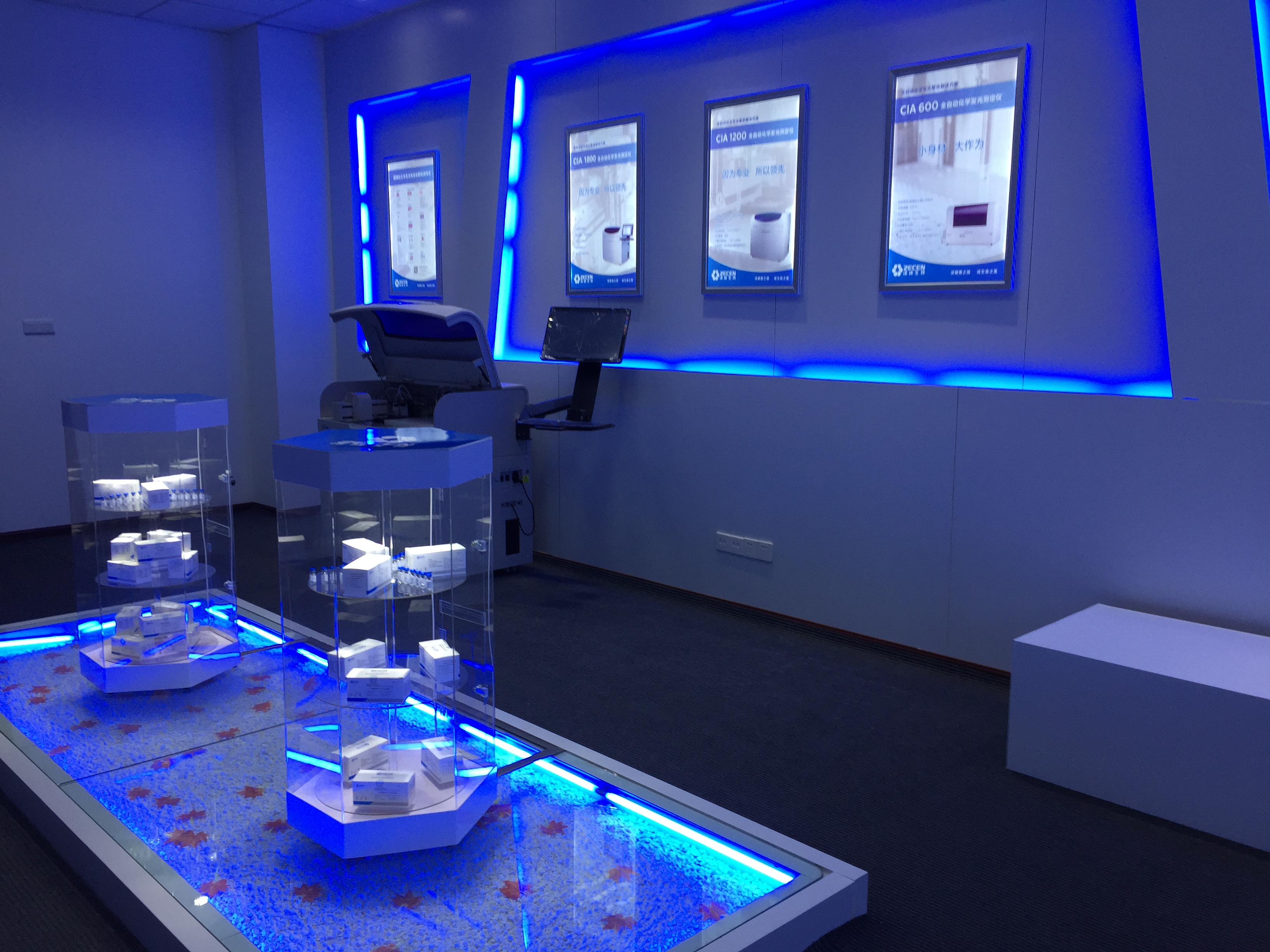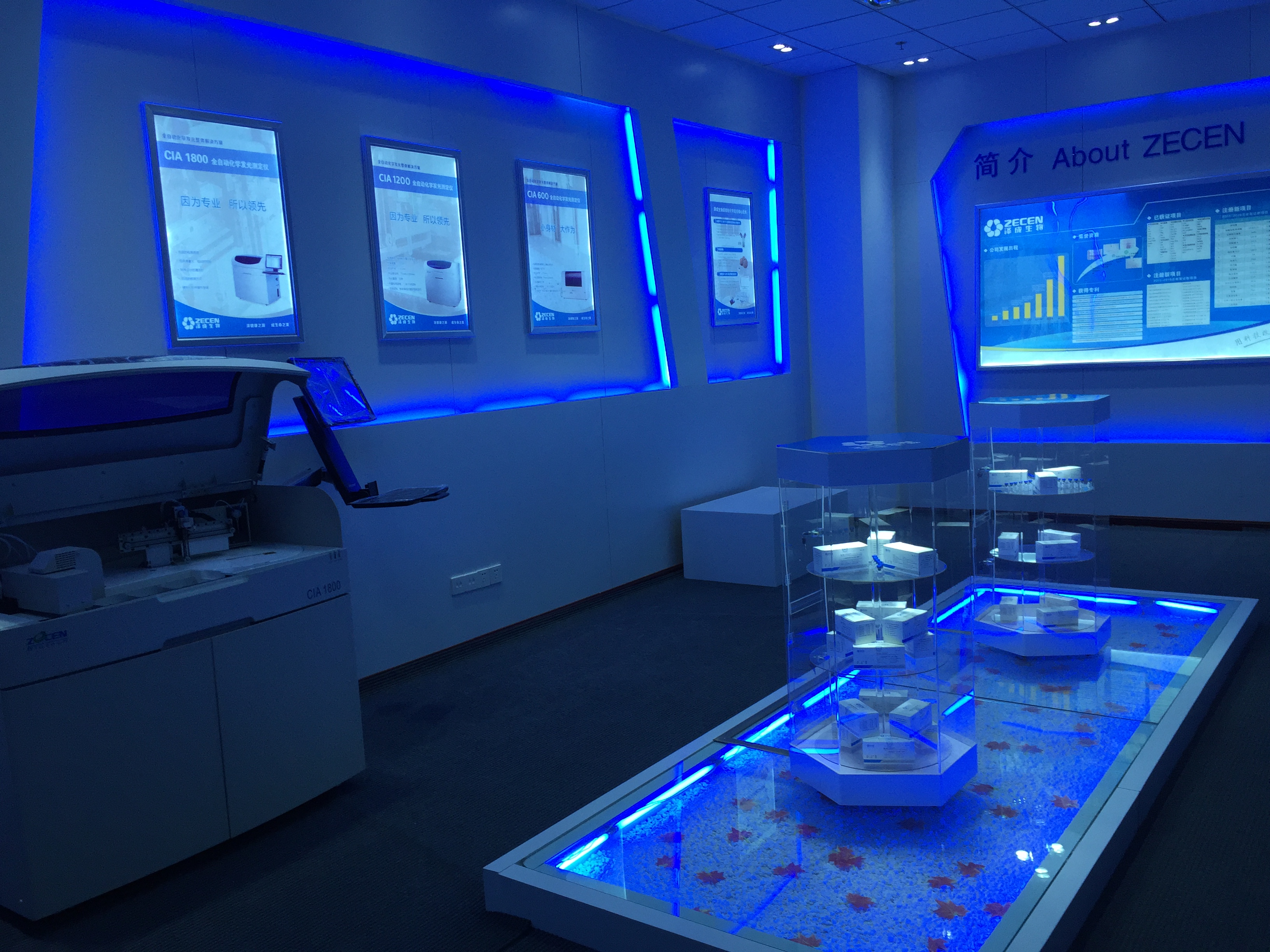Taizhou Zecen Biotech Co.,Ltd. |
|
Closed System Magnetic Particle Chemiluminescent Immunoassay Kit Diabetes glycosylated hemoglobin (HbA1C)
glycosylated hemoglobin (HbA1C)
Glycosylated hemoglobin (HbA1c) is the product of the combination of hemoglobin in red blood cells and sugars (mainly glucose) in serum through non-enzymatic reactions. The non-enzymatic reaction to form glycosylated hemoglobin is continuous, slow, and irreversible. Therefore, the content of glycosylated hemoglobin is determined by the past rather than the immediate blood sugar concentration, and whether it is fasting before the test, whether insulin is injected, whether hypoglycemic drugs are taken, etc. factors are irrelevant. It is generally believed that the concentration of glycosylated hemoglobin can effectively reflect the average blood glucose level in the past 8 to 12 weeks. Glycosylated hemoglobin is composed of HbA1a, HbA1b, and HbA1c, of which HbA1c accounts for about 70% and has a relatively stable structure. It is often used as a monitoring indicator for diabetes control in clinical practice, and its concentration is expressed as a percentage of adult hemoglobin.
Intended use: Used to detect the content of glycosylated hemoglobin (HbA1c) in human blood. HbA1c is the product of the slow continuous non-enzymatic glycation reaction of hemoglobin (Hb) under the action of hyperglycemia. Glucose specifically modifies hemoglobin at the N-terminal valine residue of the beta chain of hemoglobin to form glycated hemoglobin. Under normal physiological conditions, the amount of non-enzymatic glycation reaction products produced is proportional to the concentration of reactants. Since the hemoglobin concentration remains relatively constant, the level of glycation depends primarily on the glucose concentration and also on the length of contact between hemoglobin and glucose. Therefore, glycosylated hemoglobin is a good indicator to reflect the average blood sugar level of the patient for 2 to 3 months.
Test principle: Under the action of protease, the N-terminus of the β-chain of glycosylated hemoglobin is cut off and the glycosylated dipeptide is released. In the first reaction, the Hb concentration can be obtained by measuring the absorbance at 480 nm. In the second reaction, fructosyl peptide oxidase (FPOX) acts on the glycosylated dipeptide to generate hydrogen peroxide; in the presence of peroxidase, hydrogen peroxide and the chromogenic agent produce a color reaction, which can be determined by measuring the absorbance at 660nm Find the concentration of HbA1c. HbA1c% was calculated based on the obtained HbA1c concentration and Hb concentration.
Possible influencing factors
(1) Erythropoiesis:
Increased HbA1c levels: iron/vitamin B12 deficiency, decreased
erythropoiesis;
Decreased HbA1c level: history of erythropoietin, iron, vitamin B12
medication, reticulocytosis, chronic liver disease;
(2) Changes in the structure of hemoglobin:
Genetic or chemical changes in hemoglobin such as
hemoglobinopathies, HbF, methylhemoglobin can increase or decrease
glycated hemoglobin;
(3) Saccharification process:
Increased HbA1c levels: alcoholism, chronic renal failure,
decreased pH in red blood cells;
Decreased HbA1c levels: aspirin, vitamins C and E, increased pH in
red blood cells, certain hemoglobinopathies;
(4) Red blood cell destruction:
Increased HbA1c levels: red blood cell lifespan prolongation,
splenectomy;
Decreased HbA1c levels: shortened red blood cell lifespan,
splenomegaly, rheumatoid arthritis, antiretroviral drugs, certain
hemoglobin disorders;
(5) Inspection process:
Increased HbA1c levels: hyperbilirubinemia, aminoglycosylated
hemoglobin, alcoholism, high-dose aspirin, long-term use of
opioids;
(6) It should be noted that HbA1c is not affected by daily blood
sugar fluctuations, nor is it affected by exercise or food, but
hyperlipidemia specimens can make the results higher; factors such
as laboratory temperature, ionic strength of reagents, and pH can
affect the determination The results have some influence.
CLIA Reagents of Allergen(IgE)
| Test Item | IgE |
| Luminescent Principle | Enzymatic chemiluminescence |
| Luminescent Markers | AP(alkaline phosphatase) |
| Specification | 48, 50 ,100 Test/Kit for CIA series |
| Principle | Sandwich method |
| Component | Magnetic Beads |
| Calibrator Low | |
| Calibrator High | |
| Anti-A/Anti-B | |
| Control 1 | |
| Control 2 | |
| Accessories Required But Not Provided | Substrate |
| Washing solution | |
| Sample material | Serum/Plasma/Whole Blood |
| Storage | 2-8℃ |


